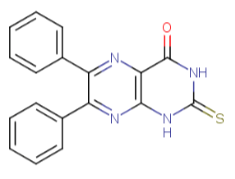SCR-What?
If you’re following the use of gene editing for sequence replacement via aka homology directed repair (HDR), you probably noticed the two papers in Nature Biotech simultaneously reporting the use of a ligase IV inhibitor called SCR7 to improve the process. The idea was to suppress non-homologous end joining (NHEJ), thereby tipping the balance towards HDR. This sounds great in theory and the results looked pretty good in the two papers.
But now there’s some confounding news out from Tocris Bioscience, first reported by Derek Lowe (to the best of my knowledge). Tocris is pretty careful and did their homework when making their own SCR7 for sale. And it turns out that the published structure of SCR7 is somewhat at odds with the actual compound. SCR7 instead turns into a pyrazine.
 |
SCR7 |
 |
pyrazine |
We tried SCR7 long ago (actually a while before the NBT papers came out), but never really had any luck with it in a variety of settings. When the papers appeared we did a double-take and re-tried using the exact same sources and similar conditions, again with no luck. It’s true that we typically do HDR using single stranded donors in human cells, which is not exactly the use case described in the NBT papers. But now I’m wondering what really underlies the observed SCR7 activity. Is it NHEJ inhibition? If the compound lot originally identified as a LigIV inhibitor was also actually the pyrazine, then it’s a pretty clear cut case and one can just substitute the altered structure for the original. But if the LigIV inhibitor is not the HDR enhancer, then things quickly get confusing. We’ll certainly go back and try again with the defined pyrazine, but it’s likely that the compound in the first two papers and from the original supplier were just the pyrazine. All of this on the heels of a papers out in NAR and Nature Communications indicating that SCR7 doesn’t do much at all and one should instead use a Rad51 activator called RS-1. The plot thickens.





Hi Jacob,
Thanks for this. Similarly to you, we obtained SCR7 (from xcessbio) and had no luck in stimulating HR in a variety of settings (DR-GFP and gene targeting assays) but obviously we haven’t tried the pyrazine compound.
SCR7 is neither a selective nor a potent inhibitor of human DNA ligase IV.
please check this article in DNA repair..
It seems that they get the research result by accident and can only be repeated with luck. That’s the uncertainty of science. Is it possible that the human cells they applied lead to the difference?
I am curious if you all have tried the pyrazine compound and compared it to the SCR7. It is an intriguing article. Thanks!
We didn’t try the pyrazine from Tocris, but when the two NBT papers came out we went back and bought a new batch of compound from their exact source. We didn’t see much of an effect for the loci and cells we tested.
SCR7 is neither a selective nor a potent inhibitor of human DNA ligase IV.
please check this article in DNA repair..
SCR7 is neither a selective nor a potent inhibitor of human DNA ligase IV.
Check this article in DNA repair..